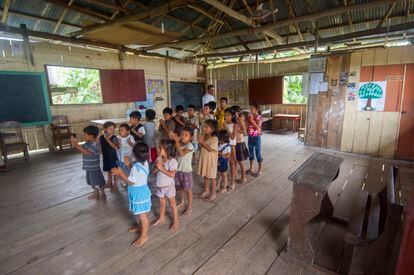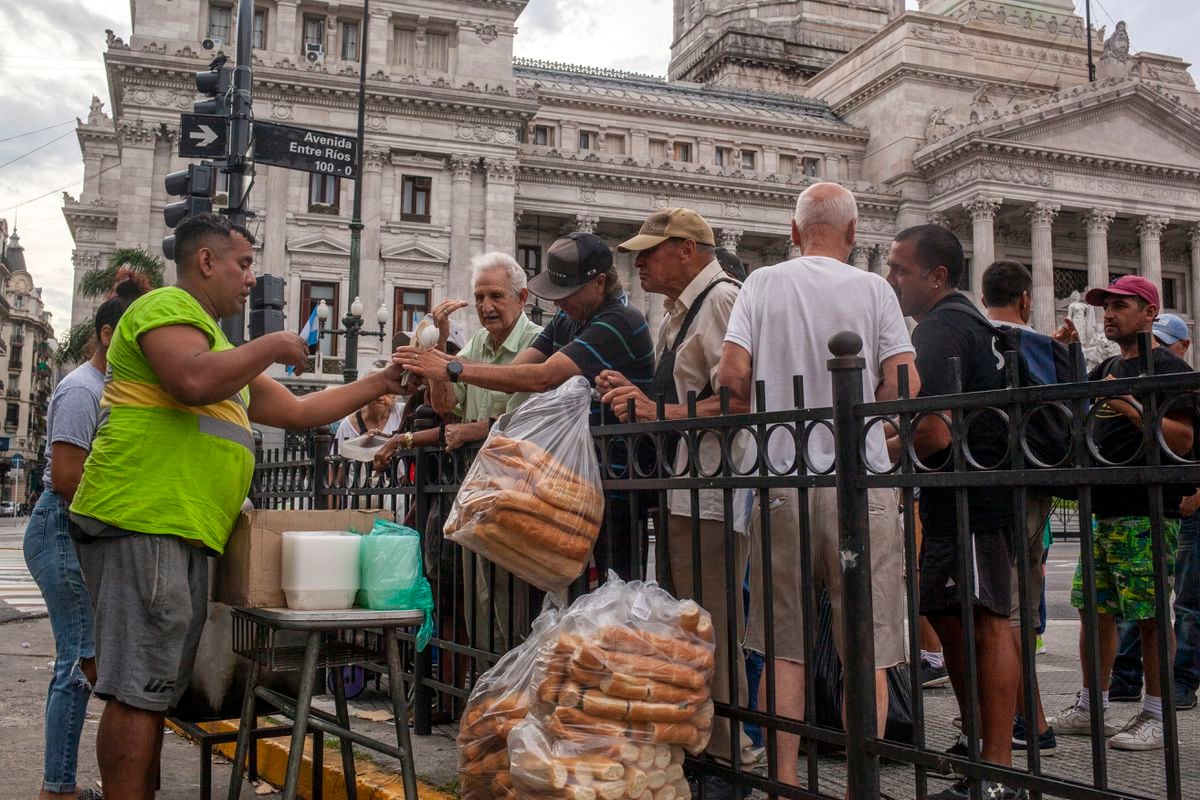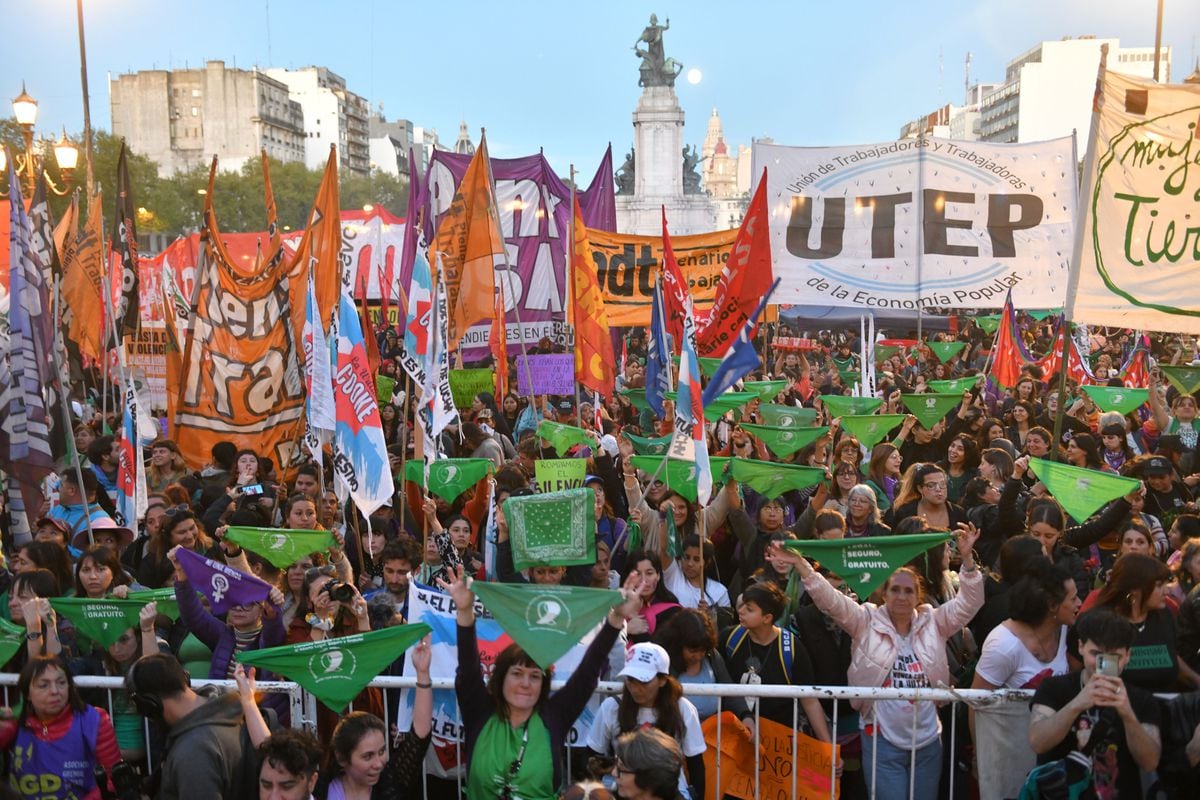A group of children in a classroom near the Marañón River in the Peruvian Amazon. Avalon (Universal Images Group via Getty)
In the Peruvian Amazon, there are girls who have to walk four days to get to school.
That is perhaps the last of the obstacles they face, time and time again, in order to study.
However, many of them fall by the wayside.
To bridge the gaps and reduce the inequalities that the pandemic has only exacerbated, Santillana, in alliance with the Entreculturas foundation and the Fe y Alegría organization, launched the #VoyaSer program on Tuesday, aimed at female students at risk of exclusion in Latin America. .
The objective of the project is to accompany the students during the last year of high school, helping them to complete compulsory education, and thus combat school dropout and reduce the digital divide and inequality.
According to the corporate director of Communication and Sustainability of Santillana, Rosa Junquera, the purpose is "to help the beneficiary girls become what they want and deserve to be."
“This project stems from the conviction that education can transform people's lives,” she says.
More than 3.1 million students in Latin America and the Caribbean are at risk of permanently leaving school, according to UNESCO.
This dropout occurs significantly in upper secondary.
Indigenous and rural women are the ones with the highest levels of illiteracy and school dropout, as well as much lower rates of school completion, regardless of age and geographic area, than their male counterparts, according to the report. Red from Entreculturas.
"It is urgent to address the deeply rooted gender inequality that causes violence against girls," highlights the foundation's vice president, Daniel Villanueva.
"Girls have the right to a childhood with equal opportunities, free from fear, threats and aggression," he insists.
Therefore, the school must be a safe space where girls receive a quality, comprehensive and inclusive education.
"As an educational company we have the responsibility to be an agent of social transformation and develop initiatives that generate a positive impact, contributing to a more sustainable and inclusive society," adds Junquera.
The program consists of four axes: educational, technological, socio-emotional and economic.
The first includes content and educational resources from Santillana.
The second is to provide girls and teachers with training in basic digital skills and to provide schools with connectivity and computers.
The social axis affects the socio-emotional development of the students through a course created by
BeJob
.
While the economic axis provides study scholarships to cover tuition, material and living expenses, according to the company in a statement.
In its first edition, the program will be implemented in educational centers in Guatemala and Peru for the benefit of "indigenous girls with high learning potential to become role models in their community."
Specifically, the project will accompany 150 girls and, also, 52 teachers from the centers La Casa del Saber, in Santa Lucía La Reforma, Totonicapán (Guatemala), and the Colegio Fe y Alegría nº 62 San José de Chiriaco, in the Imaza district (Peru).
"These are two Fe y Alegría educational centers where help is especially necessary, as they are in areas with high levels of poverty and inequality: in Totonicapán, 9 out of 10 indigenous people live in poverty," she details.
In the case of Imaza, the number of years of schooling of the population is below the national average.
“In our school, 312 indigenous girls (Huambisas and Awajunes) from 114 communities study.
Some have to walk up to 4 days to get to school”, narrates the director of the Colegio San José de Chiriaco, María Jesús Laorden.
The general director of Santillana Peru, Fernando Estévez, adds that "the project is being developed in an area of the Peruvian Amazon where the gender and socioeconomic reality is very profound."
"In line with the Sustainable Development Goals and the 2030 Agenda, we have sought a program that precisely addresses this gap," he says.
For his part, Luis Alonso, general director of Santillana Central America North, highlights that the beneficiaries "are girls who normally live in isolated communities, far from their educational centers, in difficult family and social situations."
subscribe here
to the
newsletter
of EL PAÍS México and receive all the informative keys of the current affairs of this country




/cloudfront-eu-central-1.images.arcpublishing.com/prisa/EMYXC3EVHNEG3OJHGIQCB2IVYA.jpg)


/cloudfront-eu-central-1.images.arcpublishing.com/prisa/Q6UJ4IEP6ZGLZLS3MSHF7LNYOU.jpg)